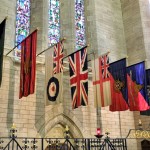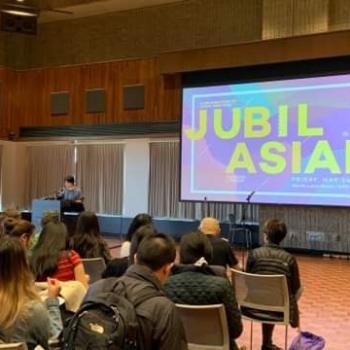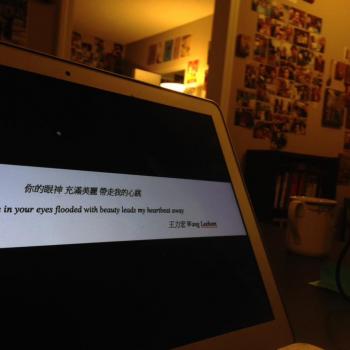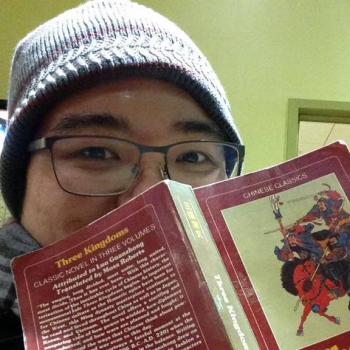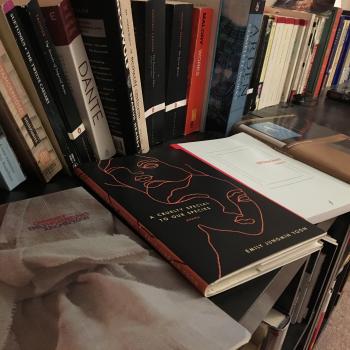It seems like an apropos time to re-introduce a conversation on race back onto the blog. Yesterday’s post struck a few raw nerves for some people on the race question, and to keep the conversation going, I thought I might re-introduce the old problem of the ‘ethnic vote’ scandal in British Columbia, on which you can catch up here on this blog, if you’ve forgotten about it.
Of course, it has been some two months since the scandal, and since that time, the unimaginable has happened: despite its scandals, the Liberal Party of British Columbia coasted to power in the recent May provincial elections. It’s over, you might say. It might seem that it’s about time to retire the scandal.
But we can’t, for two reasons.
First, it’s because the campaign for racial justice in Canada is just beginning. Given the post in yesterday’s Globe and Mail about ‘visible minorities’ (see yesterday’s post), the problem of race in Canadian public discourse is not a partisan issue that is only relevant in election season. It’s a problem in our public discourse that needs continual addressing.
And thus, second, because things get printed in national newspapers and blogs every day that are part of this public discourse, this is as good a time as any to talk about race, even if it’s through an old Liberal Party scandal. Let’s not treat the scandal as some Machiavellian window of opportunity, useful during election season, expired afterward. Let’s use it as an illustration for how we might be able to talk about race in the Canadian public sphere.
What I’m posting below is an op-ed that I wrote that was not published by Canada’s national newspaper, The Globe and Mail, when the incident happened. I won’t speculate about why it wasn’t accepted for publication, although I will say that the implicit rejection was unfortunate. Again, because the elections have already happened, you could say that it’s quite dated; in fact, I’m reading it, and I regret how dated it sounds. It is indeed politically ineffective to post this right now because there’s no seeming political purpose behind posting something like this. But the point of democratic political discourse is that now is as good a time as any to talk about race.
What I’ve done in this op-ed is to correlate Canadian ‘multiculturalism’ to how the leaked Liberal plan was not a multicultural plan. Some ethnic studies and critical race scholars might think this is anathema, that this is liberal talk that will perpetuate racializing inequalities. Let me remind them that in Sucheng Chan’s collected volume In Defense of Asian American Studies, Chan herself says that liberal talk can be used to talk about race if the goal at the end is still a re-imagining of the public sphere in which racial justice and equality is achieved. To that end, I hope that this old op-ed remains instructive as a possible model from which to launch a conversation in our public discourse about race. It may not be politically effective to post it now. But if we keep the conversation going, there’s no telling how big the snowball might get.
So with no further ado, and with utter shamelessness at its tardiness, the unpublished op-ed…
On multicultural strategic outreach plans
The recently leaked BC Liberals’ “Multicultural Strategic Outreach Plan” is a misnomer. It runs completely counter to the whole idea of multiculturalism. The strategy focuses on winning “ethnic” votes, especially from Chinese Canadians and Indo-Canadians. Among the tactics are targeted apologies for “quick wins,” “validators” for message control in the “ethnic media,” and “ethnic databases” for more effective targeting.
Let’s remember what multiculturalism really is. The Canadian Multiculturalism Act calls it a “fundamental characteristic” of our heritage. It speaks to our country’s rich cultural and racial diversity. The government thus encourages everyone to participate in civil society, regardless of origin. This goes hand in hand with respectfully recognizing the existence of communities of origin. It’s enshrined in Section 27 of the Charter. It’s the basis for how we understand our fundamental rights to equal treatment and freedoms to be ourselves.
That sounds nothing like the leaked “Multicultural Strategic Outreach Plan.” It’s not a multicultural strategy. It’s divide and conquer.
There is nothing multicultural about seeking quick wins within ethnic groups. Sure, it recognizes the existence of Chinese Canadian and Indo-Canadian communities. It also assumes that dissent and diversity don’t exist. It presumes that while non-ethnic (read: white) Canadians can be very different from each other, “ethnic” (read: Chinese and Indian) communities aren’t internally diverse, not even along generational lines (never mind class, sex, gender, and religion). Maybe the presumptuous “white man’s province” of British Columbian history lingers on. After all, assuming that everyone was the same in any given non-white group justified the historic exclusion of entire non-white groups through the Chinese head tax, the Gentleman’s Agreement, the Komagata Maru incident, and the Japanese Canadian internment. What is perhaps different this time around is that including “ethnic” communities is more politically convenient than excluding them.
These “ethnic communities” are portrayed as ethnic enclaves. They have their own ethnic media, ethnic businesses, and ethnic faith institutions, which should facilitate “ethnic database” compilations. This is in fact a matter of some debate. Some remark on how incomplete the work of integration remains. Others insist that Chinese and Indian Canadian public participation should be more recognized. Still others say that a community of origin isn’t the same as an enclave. No one in this debate seems to think that enclaves are good for a multicultural society. However, the document relishes precisely in enclave mentalities for partisan advantage. It’s as if exploiting the unfinished work of multiculturalism in order to conquer internal ethnic debates were a multicultural strategy.
A truly multicultural outreach strategy would make multiculturalism more real. It would, as our Multicultural Policy says, “promote the full and equitable participation” of everyone in our civic dialogue and “assist them in the elimination of any barrier to that participation.” It would seek out a plurality of voices within so-called ethnic communities, draw them into debate, and encourage a conversation across ethnicities, white and non-white. It would work for a British Columbia where we don’t ask, “What does theChinese/Indian community think?” but rather, “How does a multicultural society do politics?”
Of course, cynics might argue that this proposal is far too politically naïve. They would not be wrong. That’s why we need more than the apologies and resignations of politicians. Exploiting the “ethnic vote” is one thing, but the Liberals didn’t invent the concept. It’s part of our public discourse, and it is encouraging a politics of division. We as a civil society are summoned to reflection. Using terms like the “ethnic vote” suggests that little has changed since the historic wrongs committed against non-white Canadian communities, including those that have been redressed. To move forward, we as a civil society must imagine afresh what it means to engage as democratic equals in inclusive civic debates. That reflection might generate some truly multicultural strategic outreach plans in the public arena, ones that don’t have to arrive there by being leaked.

